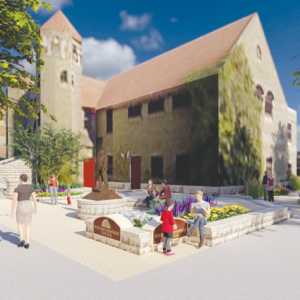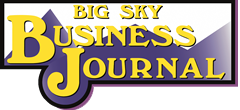Moving 50 times over 46 plus years of marriage! Roll Up the Bedtarp, Ma is the story of a cowboys wife. Stories about a way of life that is disappearing across this country. The book includes stories of how this way of life handles daily work, weather, livestock and the serious ups and downs of life. For more information or to buy a book go to www.CowboyWideDesigns.com or email Dianne.smith62 @aol.com
Many co-working spaces provide an office that functions much like a gym. Memberships provide monthly access the facility and its features such as desks, conference rooms, kitchens and other office essentials. Co-working offers remote workers a professional setting where they can connect to businesses and customers while avoiding the costs of a traditional office. The Flathead Valley has several co-working businesses open.
Walmart and Target have both announced plans to close all their US stores for Thanksgiving 2021. Walmart, like other stores, successfully pushed more sales online to reduce crowds in its stores. Given the clout of Walmart and Target, other major retailers wll likely follow their lead this year.
Montana’s Public Service Commission is planning to hire an executive director after an audit found commissioners were overspending on travel and the commission needed to improve its financial reporting and its work culture. The executive director position will oversee all internal administrative matters, including financial reporting and compliance with laws and policies. A posting for the job indicates it will pay between $85,000 and $105,000, plus benefits. The Public Service Commission regulates monopoly utilities, such as electricity and natural gas.
The Montana Wilderness Association has changed its name to Wild Montana. Founded in 1958 in Bozeman the organization now has a staff of 22 who are spread across Montana.
The Floral Cottage is now open at their new location in Helena at 2620 N. Sanders. The owner is Pam Lee and the business is open Monday-Friday from 10 a.m. to 5:30 p.m. and from 10 a.m. to 1 p.m. on Saturdays.
Roby Burch, a Big Timber native, 26, couldn’t find a grill he wanted. He was looking for portable and versatile. So he decides to put one together himself. In 2016, while at college he made a suspended grill with some chains, pipes and a 55-gallon barrel. He moved it around to parties and cookouts. Burch developed his in Four Corners outside of bozeman. The Burch Barrel is a suspended grill that can double as a firepit. The grill hangs off a tripod-like mount and the height is adjustable.
The new owners of the Helena Cycle Center are Justin and Janessa Barrell who took over the business in early January. The phone is 443-4631 or you can visit them online at www.helenacycle.com.
Cookies and Cream! will open in mid-June at 1 W. 15th St. in Helena. Get more information @cookiesandcreammt on Facebook.
Gov. Greg Gianforte is objecting to a U.S. government proposal to alter water releases from a reservoir in northeastern Montana to help an ancient and endangered fish species the dinosaur-like pallid sturgeon.
Petals Floral Design is now open at 1900 N. Last Chance Gulch in Helena. The owner is Kathy Synness and she can be reached at 439-1771.
Senor Egg has opened in Williston ND at the former Quinn’s Bar and Grill. Senor Egg will offer a variety of breakfast, lunch and dinner specials with a Mexican American flavor. Senor Egg promises to deliver a menu that Williston hasn’t seen before, from traditional Mexican dishes to the American classics. Follow them at www.facebook.com/senior.egg.77
Williston is allowing residents to pay their bills online with a variety of methods, including cryptocurrency
A civil lawsuit between Montana residents and an oil company has been dismissed as a result of a settlement agreement. The District Court Judge announced a settlement between state residents and the Atlantic Richfield Co. but provided no details of the agreement. The lawsuit was initially filed against ARCO in April 2008 by 98 people living in the cities of Opportunity and Crackerville. The lawsuit It alleged that smelter waste was contaminating the rural communities’ soils and threatening residents’ wells. Anaconda Copper Mining Co. began smelting copper ore from Butte in the 1880. In 1977, ARCO purchased the Anaconda Co. and under the federal Superfund law, ARCO became retroactively liable for the contamination.
Driverless, electric, low-speed shuttle vehicles are coming to Yellowstone National Park — and soon. A contractor will start running the automated vehicles in late May in the Canyon Village area, shuttling visitors to yet-to-be-determined stops near the campground, commercial buildings and lodging areas. The vendor, Beep Inc. Shuttles, was selected for the pilot program, which will run through next August. Beep Inc. Shuttles is based in Orlando, Florida, and bills itself as the “next generation of passenger mobility.” The fledgling business, which is less than 2 years old, has landed major federal BUILD transportation grants to develop and deploy its technology.
A coalition of wildlife advocates and hunters, represented by the non-profit environmental law firm Earthjustice, asked the U.S. Forest Service to issue new protections for wolves in designated wilderness areas following Idaho and Montana’s enactment of a rash of aggressive anti-wolf laws. The petition asks the Service for protection of wolves in national forest wilderness areas from new Idaho and Montana laws allowing professional contractors and private reimbursement programs—resembling 19th-century wolf bounties—to dramatically reduce wolf populations in the two states. The coalition said that the Montana and Idaho legislatures enacted harsh anti-wolf laws that target up to 1,800 wolves. One goal of the laws is to artificially inflate elk populations – which are currently at or above population objectives in most management units – to levels last seen in the mid-1990s, before wolves were reintroduced to their historical range in the Northern Rockies.
Bozeman Health has partnered with Seattle Children’s Hospital to expand pediatric specialty medical services in Southwest Montana. There will be a total of six services offered at the new Sheehy Center of Pediatric Excellence at Deaconess Hospital. The services include pediatric cardiology, surgery, oncology, orthopedics, integrated pediatric behavioral health, and wellness services.
A seasonal restaurant, Piccola Cucina at Ox Pasture in Red Lodge has opened for its fourth season. Chef Philip Guardione cooks authentic Sicilian food which is an amalgam of Italian cuisine influenced by all the cultures that found Sicily as their crossroads.
After sitting mostly vacant since the early 1990s, the historic Crowley Block building in the heart of downtown Lewistown will see new life and contribute to the health of the community after an $8.6 million rehabilitation and redevelopment of the basement, first floor and mezzanine. The building at 311 W. Main St. will become the new clinical site for the One Health community health center. The project will add and expand services increasing efficiency and improving the patient experience.
In Bozeman, ACRES Capital Corp. (together with its subsidiaries, “ACRES”), a commercial real estate has originated a $29.2 million loan to fund the construction of Babcock Apartments , a nearly 80,000-square-foot multifamily building located at 1612 and 1624 West Babcock Street. The loan is provided to sponsor Roundhouse Development (“Roundhouse”), the largest multifamily developer in Idaho and Montana. Babcock Apartments will contain 95 rental units, 105 parking spaces and 2,300 square feet of ground-floor retail space.
McDonald’s announced that they will be looking to hire 830 employees in Montana this summer as they welcome customers back into dining rooms.
Missoula-based 350 Montana has filed two complaints against the Montana Public Service Commission regarding a process that gives NorthWestern Energy the leeway to invest in resources that they say may disadvantage its customers. They ask a Missoula County District Court judge to find Montana’s “pre-approval” statute unconstitutional and to stop all pre-approval applications while the case is going through the legal process. The action could delay NorthWestern Energy’s proposed power plant in Laurel. Montana’s pre-approval statute says the Public Service Commission may sidestep the public process and give public utilities approval for energy sources prior to the utility acquiring the resources or starting construction of generating plants or other infrastructure.

